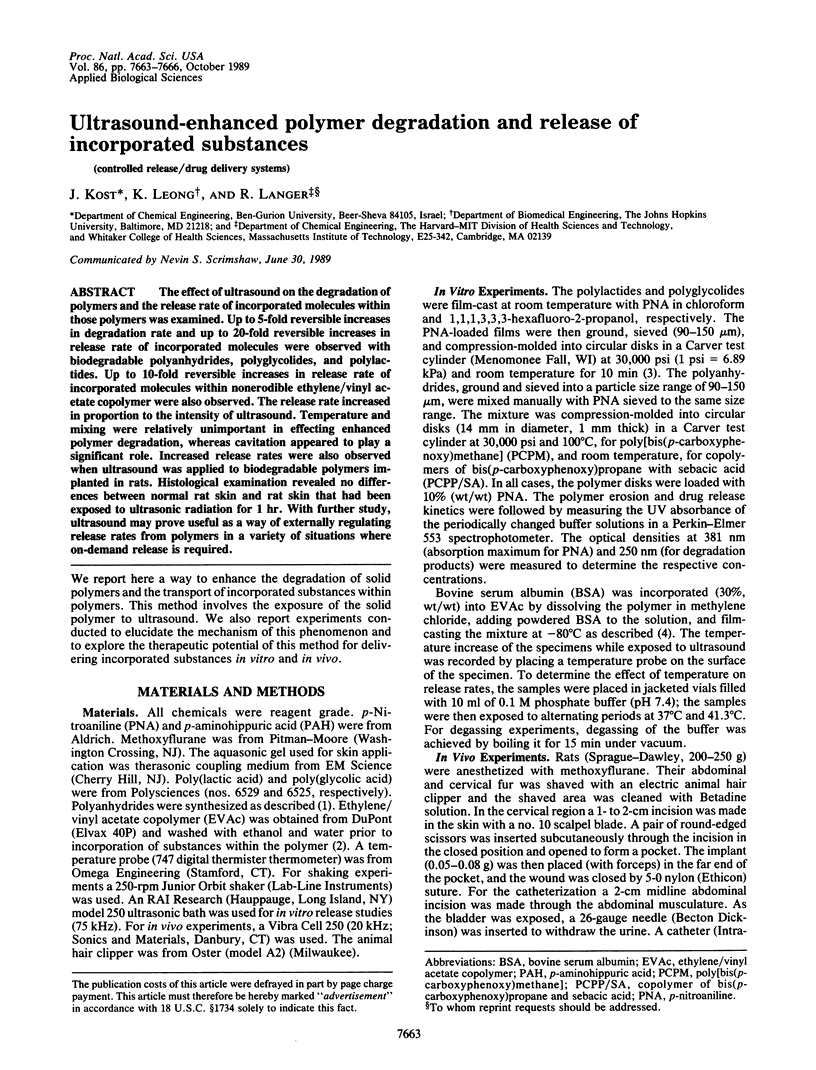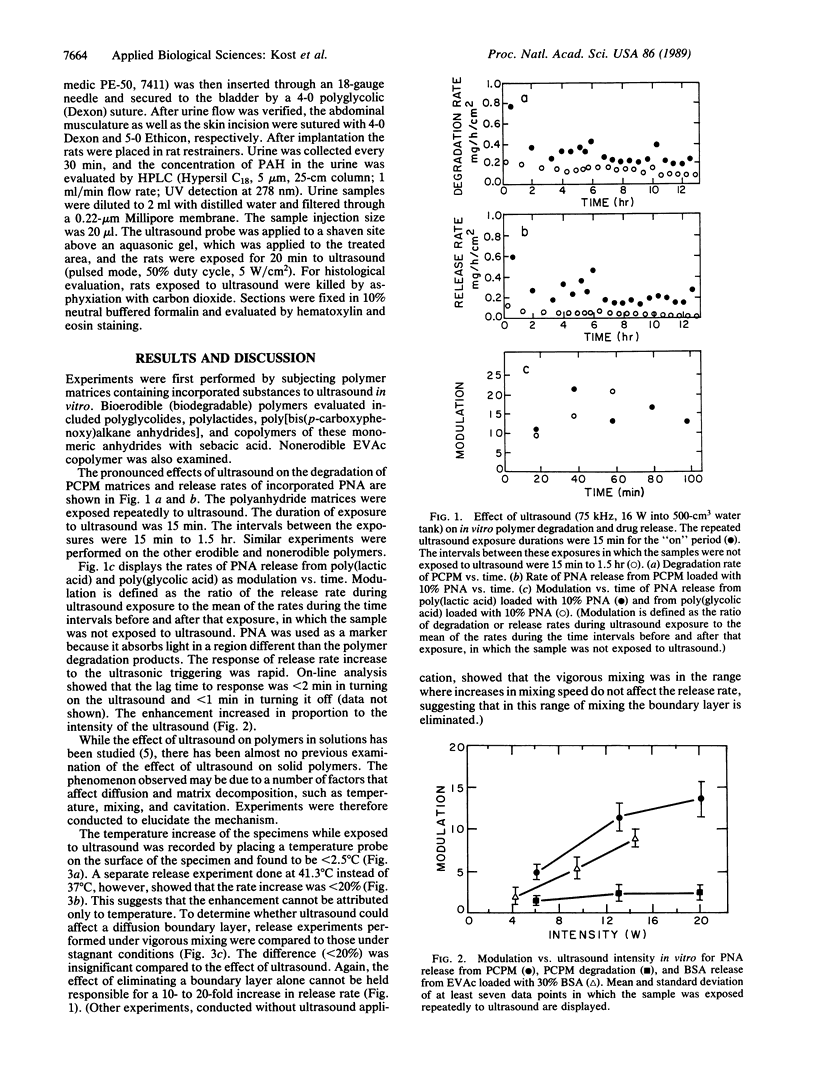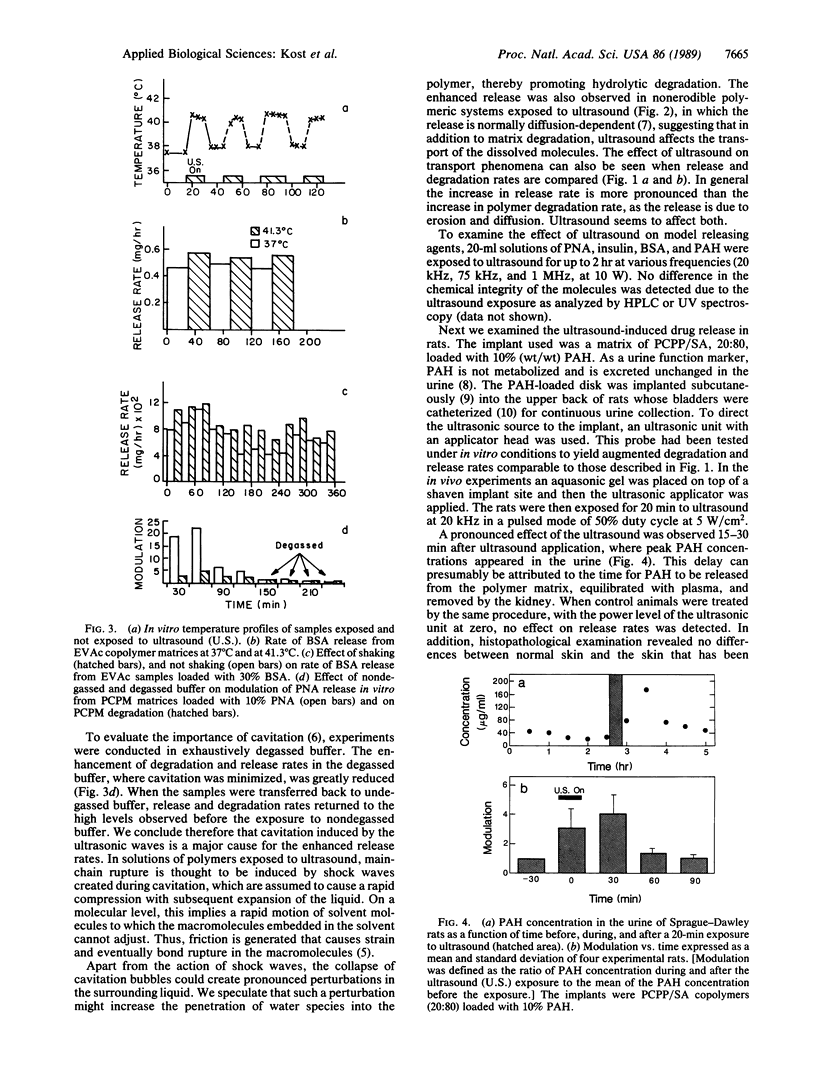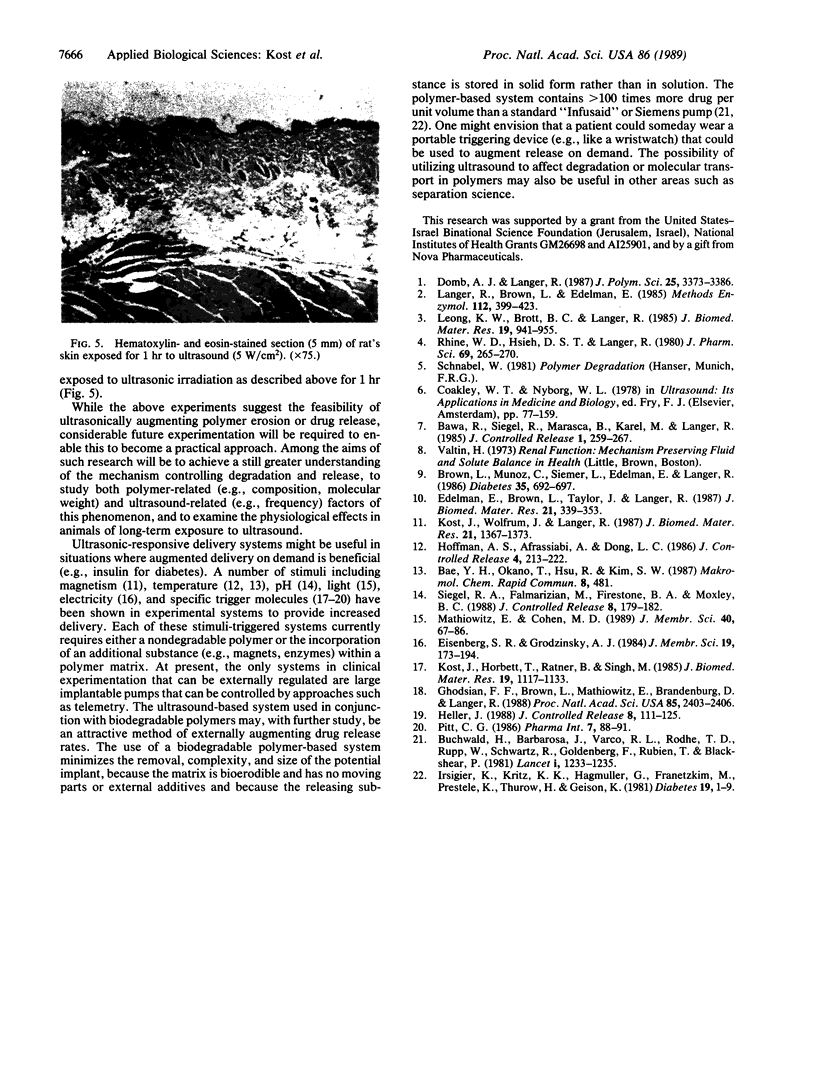Abstract
The effect of ultrasound on the degradation of polymers and the release rate of incorporated molecules within those polymers was examined. Up to 5-fold reversible increases in degradation rate and up to 20-fold reversible increases in release rate of incorporated molecules were observed with biodegradable polyanhydrides, polyglycolides, and polylactides. Up to 10-fold reversible increases in release rate of incorporated molecules within nonerodible ethylene/vinyl acetate copolymer were also observed. The release rate increased in proportion to the intensity of ultrasound. Temperature and mixing were relatively unimportant in effecting enhanced polymer degradation, whereas cavitation appeared to play a significant role. Increased release rates were also observed when ultrasound was applied to biodegradable polymers implanted in rats. Histological examination revealed no differences between normal rat skin and rat skin that had been exposed to ultrasonic radiation for 1 hr. With further study, ultrasound may prove useful as a way of externally regulating release rates from polymers in a variety of situations where on-demand release is required.
Full text
PDF



Images in this article
Selected References
These references are in PubMed. This may not be the complete list of references from this article.
- Brown L., Munoz C., Siemer L., Edelman E., Langer R. Controlled release of insulin from polymer matrices. Control of diabetes in rats. Diabetes. 1986 Jun;35(6):692–697. doi: 10.2337/diab.35.6.692. [DOI] [PubMed] [Google Scholar]
- Buchwald H., Barbosa J., Varco R. L., Rohde T. D., Rupp W. M., Schwartz R. A., Goldenberg F. J., Rublein T. G., Blackshear P. J. Treatment of a type II diabetic by a totally implantable insulin infusion device. Lancet. 1981 Jun 6;1(8232):1233–1235. doi: 10.1016/s0140-6736(81)92402-8. [DOI] [PubMed] [Google Scholar]
- Edelman E. R., Brown L., Taylor J., Langer R. In vitro and in vivo kinetics of regulated drug release from polymer matrices by oscillating magnetic fields. J Biomed Mater Res. 1987 Mar;21(3):339–353. doi: 10.1002/jbm.820210307. [DOI] [PubMed] [Google Scholar]
- Fischel-Ghodsian F., Brown L., Mathiowitz E., Brandenburg D., Langer R. Enzymatically controlled drug delivery. Proc Natl Acad Sci U S A. 1988 Apr;85(7):2403–2406. doi: 10.1073/pnas.85.7.2403. [DOI] [PMC free article] [PubMed] [Google Scholar]
- Kost J., Horbett T. A., Ratner B. D., Singh M. Glucose-sensitive membranes containing glucose oxidase: activity, swelling, and permeability studies. J Biomed Mater Res. 1985 Nov-Dec;19(9):1117–1133. doi: 10.1002/jbm.820190920. [DOI] [PubMed] [Google Scholar]
- Kost J., Wolfrum J., Langer R. Magnetically enhanced insulin release in diabetic rats. J Biomed Mater Res. 1987 Dec;21(12):1367–1373. doi: 10.1002/jbm.820211202. [DOI] [PubMed] [Google Scholar]
- Langer R., Brown L., Edelman E. Controlled release and magnetically modulated release systems for macromolecules. Methods Enzymol. 1985;112:399–422. doi: 10.1016/s0076-6879(85)12032-x. [DOI] [PubMed] [Google Scholar]
- Leong K. W., Brott B. C., Langer R. Bioerodible polyanhydrides as drug-carrier matrices. I: Characterization, degradation, and release characteristics. J Biomed Mater Res. 1985 Oct;19(8):941–955. doi: 10.1002/jbm.820190806. [DOI] [PubMed] [Google Scholar]
- Rhine W. D., Hsieh D. S., Langer R. Polymers for sustained macromolecule release: procedures to fabricate reproducible delivery systems and control release kinetics. J Pharm Sci. 1980 May;69(3):265–270. doi: 10.1002/jps.2600690305. [DOI] [PubMed] [Google Scholar]



